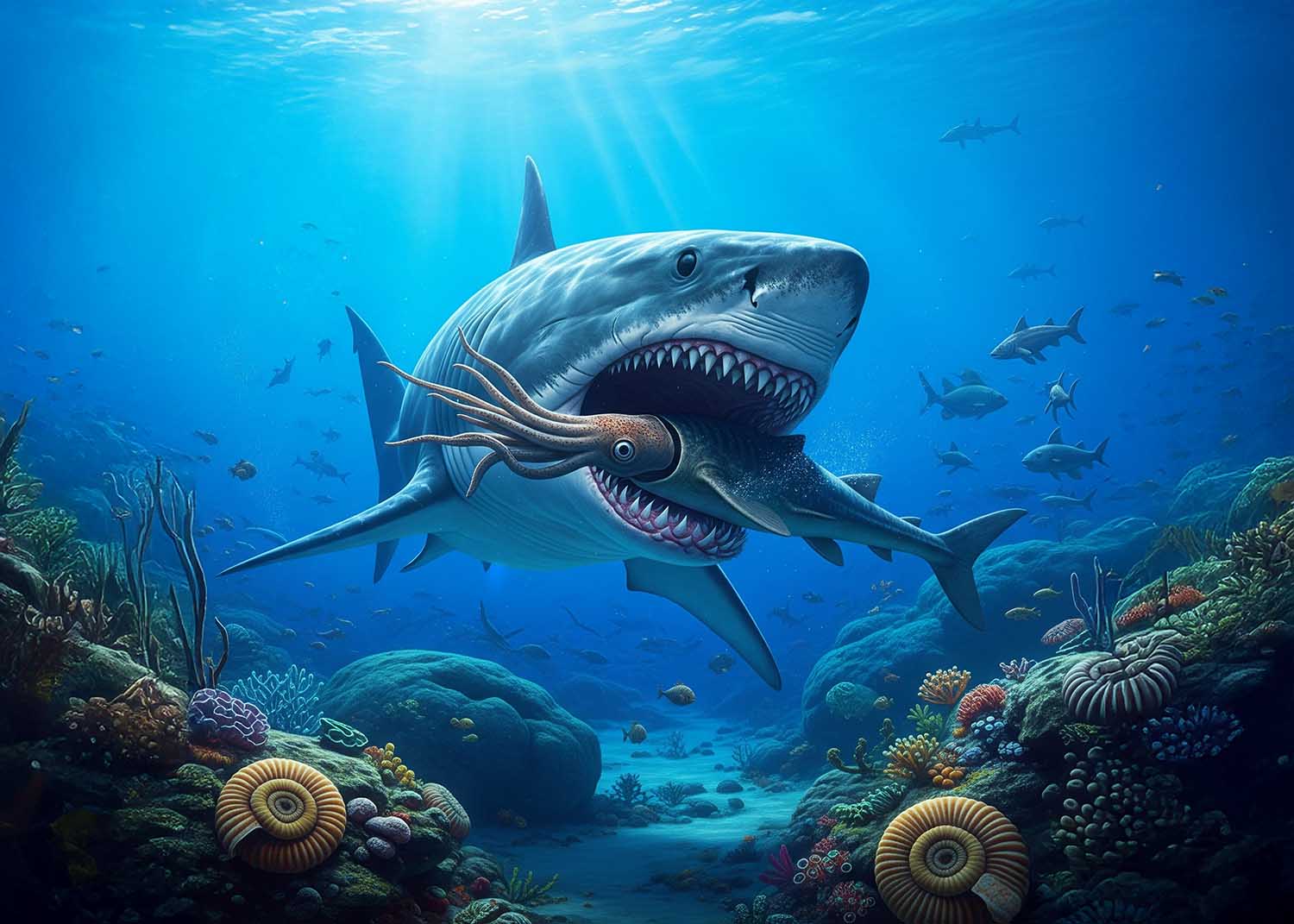Imagine a shark so big it could swallow a car whole, ruling the oceans for millions of years. This was the Megalodon, the largest and most fearsome shark that ever lived. To understand how such a colossal creature survived, we need to explore its world. This article dives deep into the Megalodon habitat and diet, uncovering where this ancient super-predator lived and what massive prey it hunted to sustain its immense size. Get ready to journey back in time to the warm, ancient seas where Megalodon reigned supreme!
Don’t Miss This!
After reading, challenge yourself with our interactive quiz at the end. Click here to take the Quiz
Table of Contents
Brief Introduction of a Giant Hunter
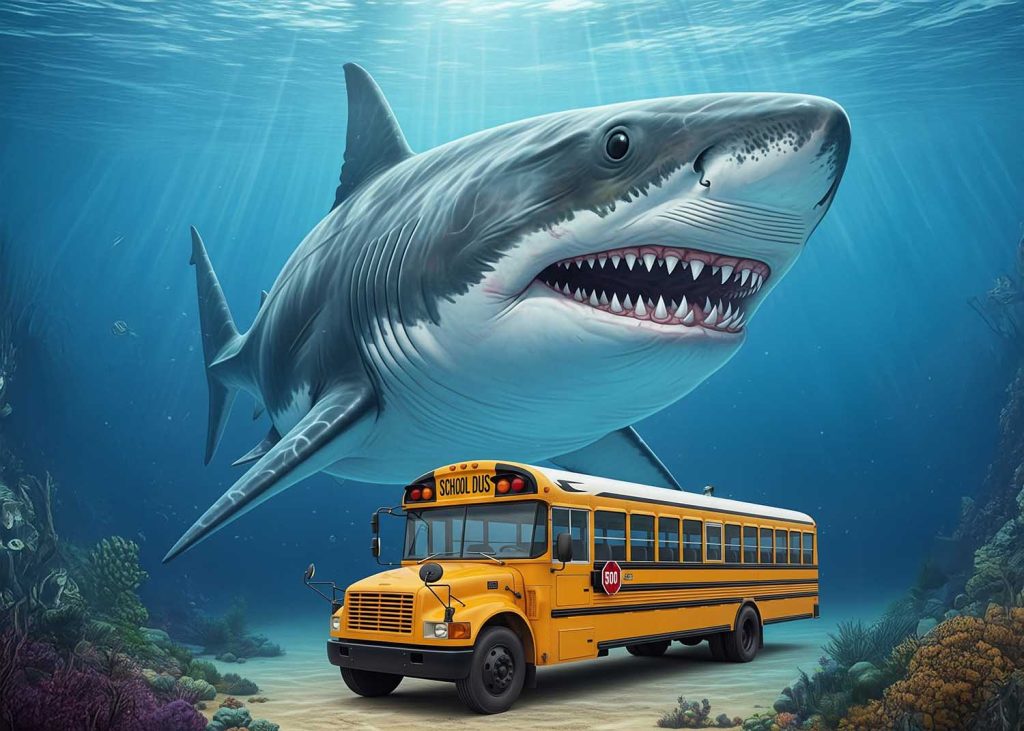
Megalodon was the largest shark ever, dwarfing even today’s great white sharks.
The Megalodon (meaning “big tooth”) was an extinct species of giant shark that lived from about 23 to 3.6 million years ago. It was truly enormous, with estimates suggesting it could reach lengths of up to 60 feet (18 meters) or even more. Its teeth alone were massive, often exceeding 7 inches in length, and were perfectly designed for tearing through flesh and bone. This incredible size meant it needed a vast amount of food, which directly influenced its Megalodon habitat and diet.
For millions of years, Megalodon was the undisputed apex predator of the marine world. Its presence shaped the evolution of other marine animals, as many developed defenses or strategies to avoid becoming its next meal.
Megalodon Habitat: Warm Coastal Waters

Megalodon preferred warm, shallow coastal waters, which were rich in its preferred prey.
The primary Megalodon habitat was the warm, temperate, and subtropical coastal waters around the globe. Fossil evidence, mainly its teeth, has been found in almost every continent, including North and South America, Europe, Africa, and Australia. This wide distribution suggests it was a highly successful and adaptable predator.
Megalodon likely preferred these coastal areas because they were rich in marine life, providing an abundant food supply. These shallow, productive waters were also ideal nursery grounds for its young. The presence of warm currents and diverse ecosystems made these regions perfect hunting grounds for such a massive predator. It avoided the colder, polar waters, which would later play a role in its extinction.
Fun Fact: Megalodon teeth are found all over the world, from the deep ocean floor to the tops of mountains! This is because areas that were once ancient seabeds have been lifted up over millions of years by tectonic activity.
Megalodon Diet: A Taste for Giants
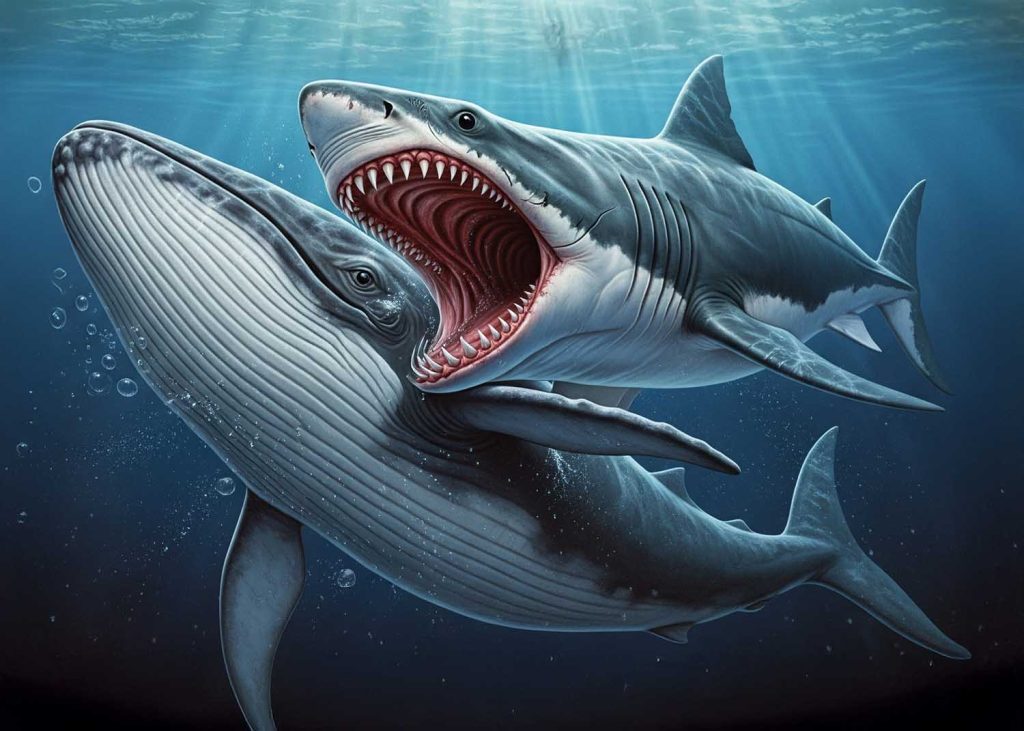
Megalodon’s diet consisted primarily of large marine mammals, especially whales.
Given its enormous size and powerful bite, the Megalodon diet had to consist of very large prey to provide enough energy. Scientists believe its primary food source was large marine mammals. These included:
- Whales: Both baleen whales (filter feeders) and toothed whales were common prey. Fossil whale bones have been found with clear Megalodon bite marks.
- Seals and Sea Cows (Dugongs/Manatees): These slower-moving, blubber-rich animals would have been easy targets.
- Large Fish: While less common, very large fish might have also been part of its diet.
Megalodon was an apex predator, meaning it was at the very top of the food chain and had no natural predators. Its hunting strategy likely involved ambushing its prey from below, using its immense speed and power to deliver a devastating bite. The sheer volume of food required to sustain a creature of its size was immense, making its habitat choices critical.
Fun Fact: To hunt large whales, Megalodon may have first attacked their flippers and tails to immobilize them before delivering a final, fatal bite. This shows a level of strategic hunting.
Evidence from Fossil Records
Fossilized whale bones with distinct bite marks provide direct evidence of Megalodon’s diet.
How do scientists know so much about the Megalodon habitat and diet? The main clues come from fossil evidence. While Megalodon’s cartilage skeleton rarely fossilized, its teeth are abundant. These teeth are found in marine sediments all over the world, indicating its widespread habitat.
Even more compelling are the fossilized bones of its prey. Scientists have discovered whale bones, for example, with deep gouges and cut marks that perfectly match Megalodon teeth. These marks often show signs of crushing, indicating the immense bite force of the shark. Sometimes, even broken Megalodon teeth are found embedded in these ancient bones, providing direct proof of its hunting activities.
The Role of Nursery Areas
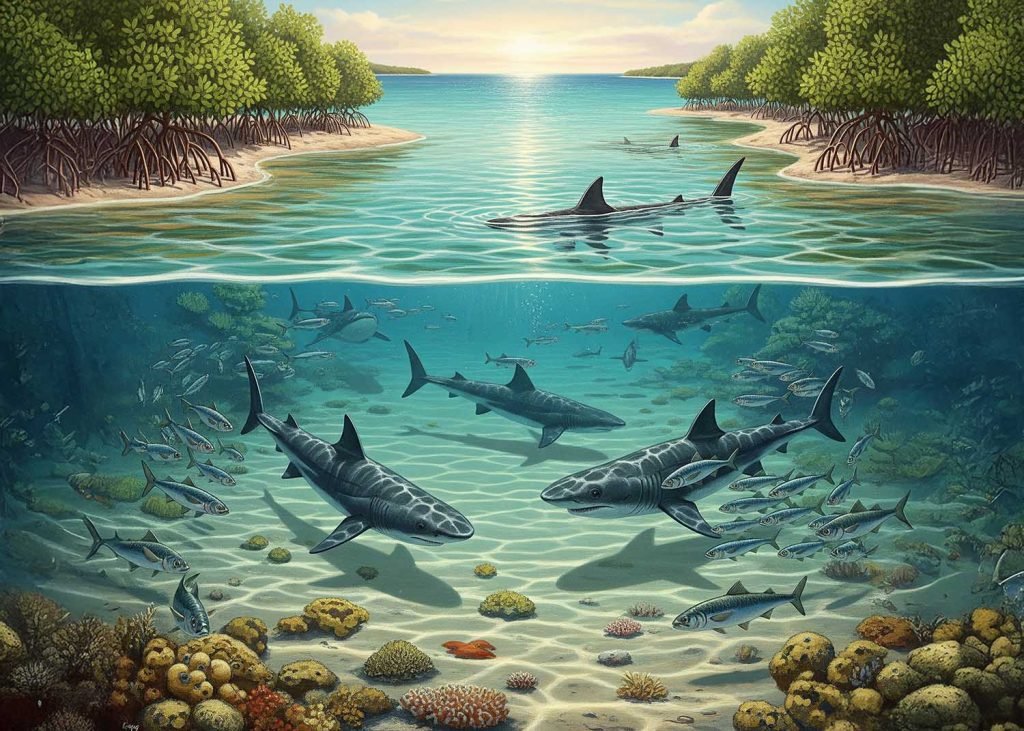
Shallow, warm coastal areas served as vital nursery grounds for young Megalodons, protecting them from larger predators.
Like many large sharks today, Megalodon likely used specific nursery areas for its young. These were typically shallow, warm coastal waters, often bays or lagoons. These areas provided several advantages for juvenile Megalodons:
- Protection: Shallow waters offered some protection from larger predators, including adult Megalodons.
- Abundant Food: These areas were rich in smaller fish and marine mammals, providing an easy food source for growing pups.
- Warmth: The warmer waters would have helped the young sharks grow faster.
The existence of these nursery grounds is inferred from the discovery of many smaller, juvenile Megalodon teeth in specific fossil sites. The health and availability of these crucial nursery habitats were directly tied to the overall success and survival of the Megalodon population, influencing its Megalodon habitat and diet throughout its life cycle.
Fun Fact: A famous Megalodon nursery has been identified in Panama, where many small Megalodon teeth have been found. This gives us a window into the early life of these giant sharks.
The Link to Extinction
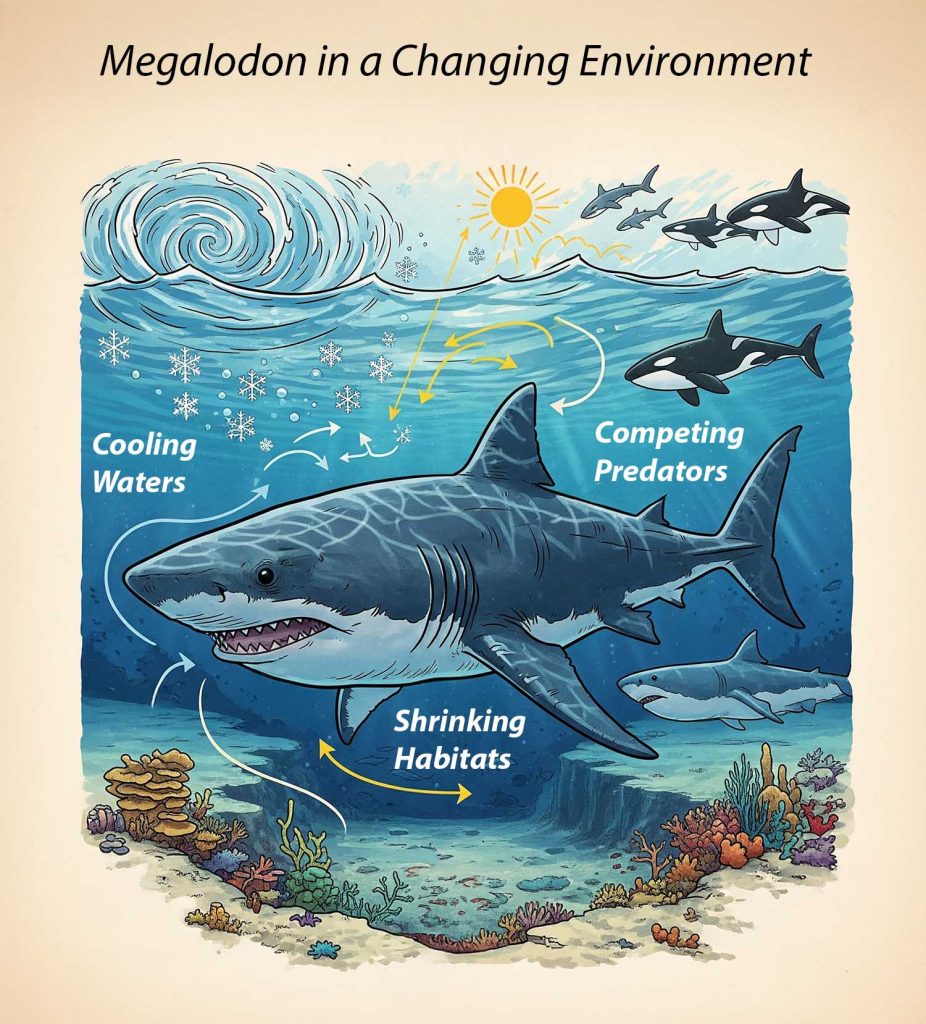
Changes in its preferred habitat and the availability of its main food sources ultimately led to Megalodon’s disappearance.
Understanding the Megalodon habitat and diet is crucial to understanding why it eventually went extinct. As Earth’s climate began to cool around 3.6 million years ago, its preferred warm, shallow coastal habitats started to shrink. Its main prey, large whales, began to migrate to colder, polar waters, where Megalodon couldn’t follow.
This combination of shrinking habitat and dwindling food supply, coupled with the rise of new competitors like ancient orcas, put immense pressure on the giant shark. It couldn’t adapt quickly enough to these drastic changes, leading to its eventual disappearance. The story of its life is deeply intertwined with the story of its environment.
The Legacy of the Ocean Giant
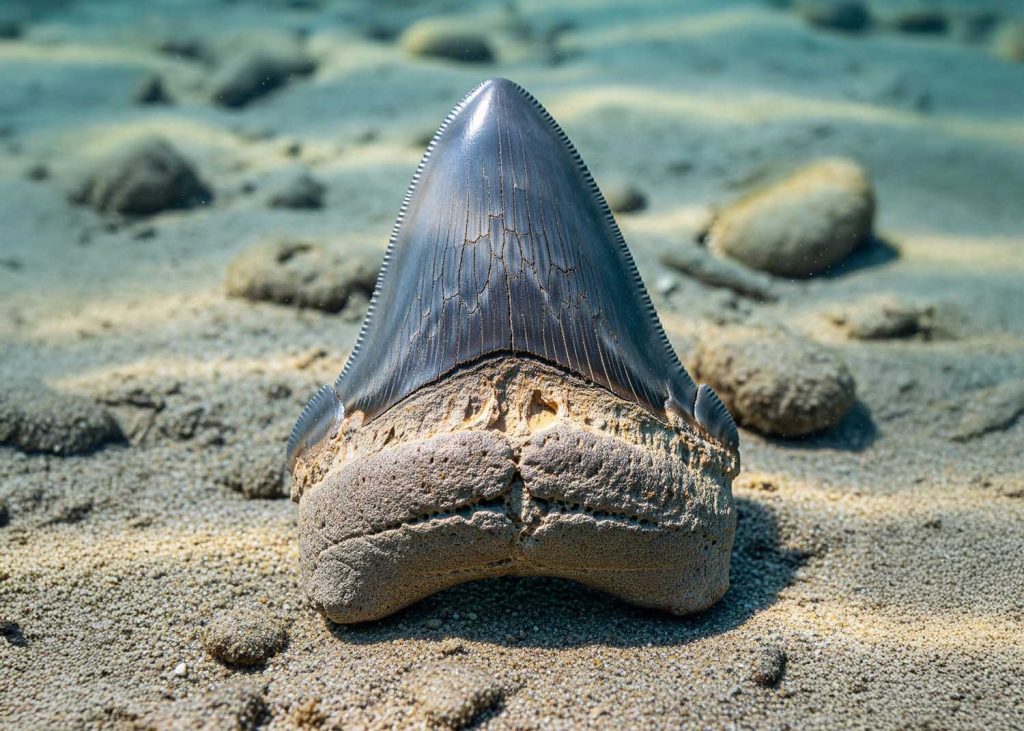
Megalodon’s fossilized teeth are a lasting reminder of its incredible reign and the dynamic nature of Earth’s oceans.
The study of Megalodon habitat and diet paints a vivid picture of a truly magnificent creature perfectly adapted to its ancient world. Its reign as the ocean’s ultimate predator for millions of years is a testament to its evolutionary success. Even though it’s gone, its fossilized teeth continue to be found, reminding us of the incredible power and scale of life that once existed.
The story of Megalodon is a powerful lesson in how interconnected life is with its environment. It reminds us that even the most dominant species are subject to the forces of nature and the constant changes of our dynamic planet. To learn more about the theories behind its disappearance, check out our article on What Happened to the Biggest Shark That Ever Lived?
Megalodon Habitat and Diet Quiz
Test your knowledge about where the giant shark lived and what it ate!

